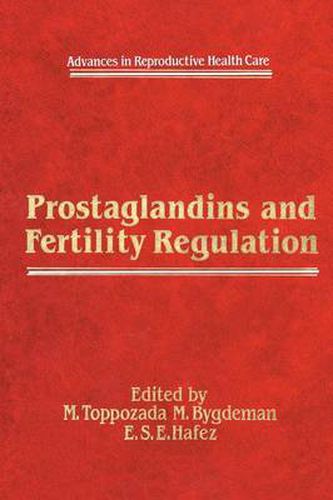Readings Newsletter
Become a Readings Member to make your shopping experience even easier.
Sign in or sign up for free!
You’re not far away from qualifying for FREE standard shipping within Australia
You’ve qualified for FREE standard shipping within Australia
The cart is loading…






This title is printed to order. This book may have been self-published. If so, we cannot guarantee the quality of the content. In the main most books will have gone through the editing process however some may not. We therefore suggest that you be aware of this before ordering this book. If in doubt check either the author or publisher’s details as we are unable to accept any returns unless they are faulty. Please contact us if you have any questions.
The role of prostaglandins in physiological events and pathological disorders related to human reproduction has been most actively investigated in the past decade. Their clinical use for fertility regulation, extensively evaluated, represents the most common clinical indication for the administration of these remarkable compounds. Thus, it is most appropriate to update the available information related to the use of prostaglandins in the regulation of human fertility to provide a background document for the benefit of clinicians and scientists. Invited experts of international reputation from various parts of the world have contributed, each in his own area of interest, to offer this book, which we hope will fill an existing gap. M. T. M. B. E. S. E. H. ix 1 Potential for prostaglandin use in controlling human reproduction K. T. KIRTON and F. A. KIMBALL BACKGROUND It was observed in 1930 that seminal plasma of a number of species contained very large amounts of substance(s) capable of altering uterine motility. These substances were subsequently demonstrated to be prostaglandins (PGs); this began the early and continued association of this group of compounds with reproduction. The activity was found to be associated with a fraction containing lipid-soluble acids, derived from prostanoic acid. Restrictions imposed by obscure sources and small amounts of material available for testing were initially impediments to their study.
$9.00 standard shipping within Australia
FREE standard shipping within Australia for orders over $100.00
Express & International shipping calculated at checkout
This title is printed to order. This book may have been self-published. If so, we cannot guarantee the quality of the content. In the main most books will have gone through the editing process however some may not. We therefore suggest that you be aware of this before ordering this book. If in doubt check either the author or publisher’s details as we are unable to accept any returns unless they are faulty. Please contact us if you have any questions.
The role of prostaglandins in physiological events and pathological disorders related to human reproduction has been most actively investigated in the past decade. Their clinical use for fertility regulation, extensively evaluated, represents the most common clinical indication for the administration of these remarkable compounds. Thus, it is most appropriate to update the available information related to the use of prostaglandins in the regulation of human fertility to provide a background document for the benefit of clinicians and scientists. Invited experts of international reputation from various parts of the world have contributed, each in his own area of interest, to offer this book, which we hope will fill an existing gap. M. T. M. B. E. S. E. H. ix 1 Potential for prostaglandin use in controlling human reproduction K. T. KIRTON and F. A. KIMBALL BACKGROUND It was observed in 1930 that seminal plasma of a number of species contained very large amounts of substance(s) capable of altering uterine motility. These substances were subsequently demonstrated to be prostaglandins (PGs); this began the early and continued association of this group of compounds with reproduction. The activity was found to be associated with a fraction containing lipid-soluble acids, derived from prostanoic acid. Restrictions imposed by obscure sources and small amounts of material available for testing were initially impediments to their study.